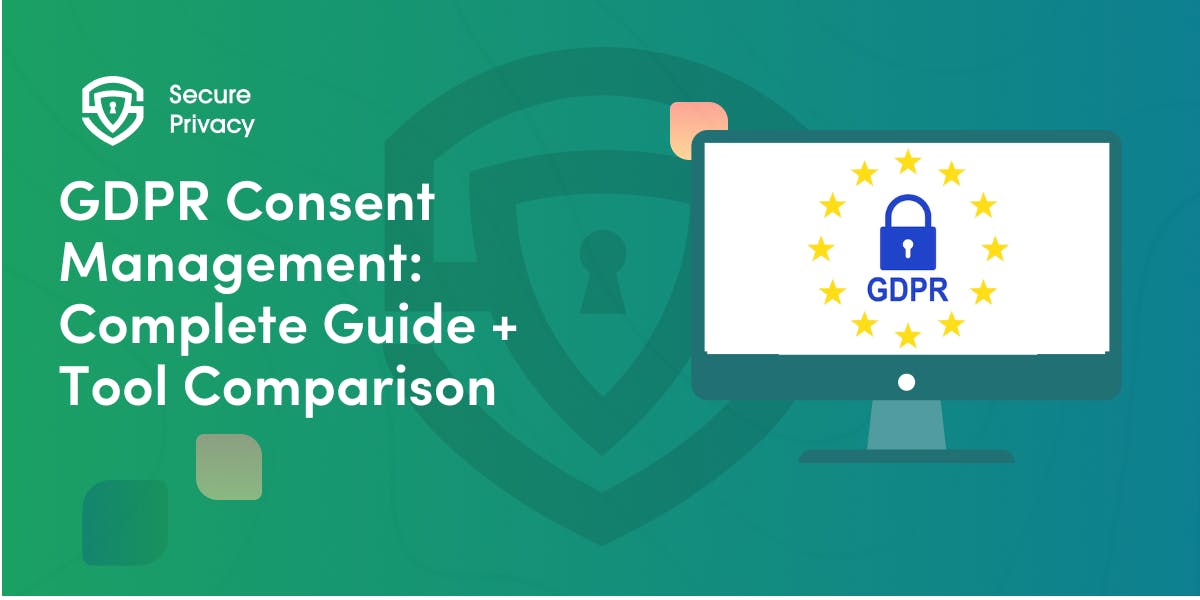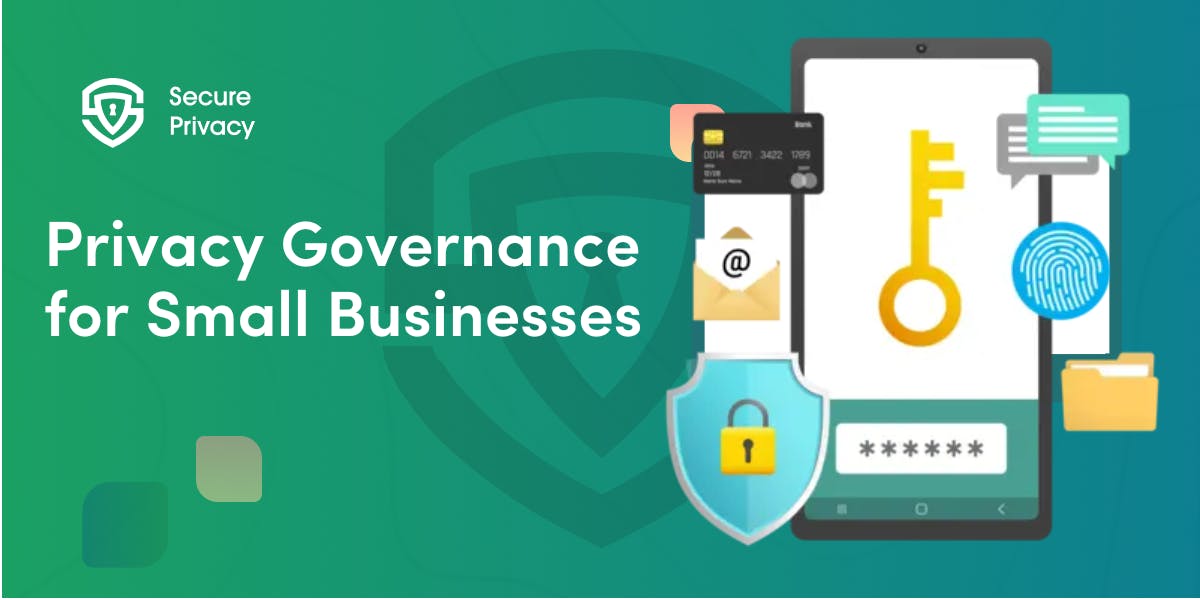When Blockchain Meets the Right to be Forgotten
Organizations worldwide are grappling with an unprecedented regulatory puzzle: how to harness blockchain technology's revolutionary potential while respecting individuals' fundamental right to have their personal data erased.
This challenge has intensified as blockchain adoption accelerates across industries, from supply chain management to financial services, while European data protection authorities strengthen enforcement of the General Data Protection Regulation.
The core tension stems from blockchain's defining characteristic—immutability—which directly conflicts with GDPR Article 17's requirement that organizations delete personal data upon request. Blockchain networks are designed to create permanent, tamper-proof records distributed across numerous computers worldwide.
Once data enters this system, traditional deletion becomes technically impossible, potentially exposing organizations to substantial GDPR penalties of up to €20 million or 4% of global revenue.
Recent guidance from the European Data Protection Board in April 2025 has begun clarifying this complex landscape, offering organizations practical pathways to achieve compliance without abandoning blockchain innovation.
However, success requires understanding both the legal requirements and available technical solutions, along with implementing careful design considerations from the earliest stages of blockchain development.
Understanding Article 17's Legal Requirements
The right to erasure under GDPR Article 17 extends far beyond simple data deletion upon request, creating comprehensive obligations that organizations must navigate carefully.
Mandatory Erasure Circumstances
Article 17 establishes specific circumstances requiring data controllers to erase personal data without undue delay. These situations include cases where personal data no longer serves its original purpose, where individuals withdraw consent without alternative legal grounds for processing, where people object to processing without overriding legitimate interests, where data has been unlawfully processed, where erasure is required for legal compliance, or where information was collected from children for online services.
The regulation imposes proactive obligations beyond responding to individual requests. Data controllers must autonomously erase information when specified conditions apply, even without explicit requests from data subjects. This requirement necessitates regular review processes and established time limits for periodic data assessment, connecting directly to GDPR's principles of purpose limitation, data minimization, and storage limitation.
Organizations face substantial enforcement risks when failing to meet these obligations. Regulatory authorities have imposed significant fines for erasure violations, and individuals may pursue compensation claims under Article 82 for damages resulting from non-compliance.
Legal Exceptions and Balancing Requirements
Despite broad erasure obligations, Article 17 provides important exceptions that limit the right to be forgotten in specific circumstances. The most practically significant exceptions include processing necessary for exercising freedom of expression and information rights, compliance with legal obligations under Union or Member State law, performance of public interest tasks, establishment of legal claims, and scientific research purposes.
The freedom of expression exception requires careful balancing between fundamental rights and data protection interests, particularly affecting media and publishing contexts. However, this exception notably does not apply to internet search engine providers according to Court of Justice of the European Union jurisprudence, demonstrating the nuanced application of these limitations.
Legal retention obligations create particularly complex scenarios where organizations face conflicting requirements between erasure duties and mandatory data retention under commercial or tax law. Data "blocking" combined with access restrictions often represents the preferred approach in these situations, allowing compliance with both erasure and retention obligations while limiting data accessibility for different purposes.
Blockchain's Technical Architecture Creates Compliance Challenges
Blockchain technology operates through design principles that fundamentally conflict with traditional data management approaches required for GDPR compliance.
Immutability and Distributed Architecture
Blockchain functions as a decentralized, immutable digital ledger where transactions and data entries become permanently recorded across a distributed network. The fundamental design ensures data integrity and traceability through cryptographic hashing and consensus mechanisms that make historical records practically impossible to alter or delete.
This immutability represents blockchain's core value proposition, providing trust and verification without relying on central authorities. However, when personal data is recorded directly on-chain, the technical architecture makes traditional deletion impossible. Once data is committed through the consensus process, it becomes distributed across all network participants and cannot be removed through conventional means.
The permanent nature of blockchain records violates multiple GDPR principles simultaneously, including data minimization requirements that mandate limiting data collection to what is necessary for specified purposes. Storage limitation principles require data retention only for as long as necessary for processing purposes, directly conflicting with blockchain's permanent record-keeping approach.
Multi-Party Complexity and Jurisdiction Issues
Blockchain networks often involve complex multi-party architectures where determining clear roles and responsibilities for data controllers and processors becomes difficult. This complexity complicates compliance efforts and accountability mechanisms, particularly when network participants operate across different jurisdictions with varying data protection requirements.
The decentralized nature of blockchain networks creates uncertainty about applicable law and jurisdiction, especially when network participants are distributed across multiple countries. Organizations may find themselves subject to conflicting legal requirements or uncertain about which privacy regulations apply to their specific blockchain implementation.
These jurisdictional challenges intensify when considering that blockchain networks can span continents, with validators and nodes operating under different legal frameworks. Traditional concepts of data localization and cross-border transfer restrictions become complex to apply in truly decentralized systems.
Technical Solutions Emerge for Compliance
Innovative technical approaches are addressing the blockchain-GDPR compliance challenge through sophisticated design strategies that preserve blockchain benefits while enabling data protection compliance.
Cryptographic Key Management Approaches
The encryption key disposal method represents one of the most promising technical solutions for achieving functional compliance with erasure requirements. This approach involves storing only encrypted personal data on the blockchain while maintaining encryption keys in separate, mutable systems that can be modified or deleted independently.
When individuals exercise their right to erasure, organizations permanently delete the corresponding encryption key rather than attempting to remove data from the blockchain itself. This renders the on-chain encrypted data effectively inaccessible and meaningless, achieving functional compliance with erasure requirements while maintaining blockchain immutability.
Advanced cryptographic techniques such as zero-knowledge proofs and homomorphic encryption offer additional possibilities for processing personal data without exposing it directly on the blockchain. These methods allow verification and computation on encrypted data without revealing underlying information, potentially enabling blockchain applications while maintaining privacy protection.
However, these sophisticated approaches require careful implementation and may not suit all use cases, particularly those requiring high transaction throughput or low computational overhead. Organizations must evaluate whether the complexity and resource requirements justify the privacy benefits for their specific applications.
Off-Chain Storage with Blockchain References
The European Data Protection Board strongly recommends avoiding on-chain storage of personal data whenever possible, suggesting instead the use of off-chain storage with blockchain-based hash pointers or references. This architectural approach stores personal data in traditional, mutable databases while recording only cryptographic hashes or identifiers on the blockchain.
When erasure is required, personal data can be deleted from off-chain storage while maintaining the integrity of blockchain records through the hash references. This hybrid approach preserves many benefits of blockchain technology, including transaction verification and audit trails, while enabling full compliance with GDPR erasure requirements.
Organizations can maintain detailed records of data processing activities and access controls in off-chain systems while using blockchain for transaction validation and consensus. This approach requires careful system design to ensure that hash references cannot be used to reconstruct personal data and that off-chain storage systems implement appropriate security and access controls.
The success of hybrid architectures depends on maintaining clear separation between immutable blockchain records and mutable personal data storage, while ensuring that the overall system delivers the transparency and verification benefits that justify blockchain adoption.
Governance Frameworks and Risk Assessment
Successful blockchain-GDPR compliance requires comprehensive governance frameworks that address the unique challenges of distributed ledger technologies.
Data Protection Impact Assessment Requirements
The European Data Protection Board emphasizes conducting Data Protection Impact Assessments before implementing blockchain-based processing activities that might pose significant risks to individual rights. These assessments must evaluate the necessity and proportionality of blockchain use, consider alternative technical approaches, and identify specific measures to protect data subject rights.
DPIAs addressing blockchain implementations must consider the unique challenges of distributed processing, consensus mechanisms, and involvement of multiple network participants. Organizations should assess whether blockchain technology is genuinely necessary for their specific use cases or whether alternative technologies might achieve similar objectives with fewer data protection risks.
Effective impact assessments examine the entire data lifecycle within blockchain systems, from initial collection through processing, storage, and eventual disposal. They must address potential risks from network evolution, new participant addition, and changes in regulatory requirements over time.
Multi-Party Role Definition and Accountability
Organizations must establish clear governance frameworks that define roles and responsibilities among blockchain network participants, particularly distinguishing between data controllers and processors in complex multi-party architectures. These frameworks should include mechanisms for handling data subject requests, coordinating compliance efforts across network participants, and ensuring transparency about data processing activities.
The distributed nature of blockchain networks requires careful consideration of how traditional data protection roles apply in decentralized contexts. Joint controller arrangements may be necessary when multiple parties participate in determining processing purposes and means, requiring detailed contractual arrangements to govern data protection obligations.
Clear documentation of participant roles becomes essential for ensuring accountability and enabling effective responses to data subject requests across distributed networks. Organizations must establish processes for coordinating compliance activities and sharing responsibility for data protection obligations among network participants.
Recent Regulatory Developments Shape Future Compliance
The regulatory landscape for blockchain-GDPR compliance continues evolving as authorities provide clearer guidance and enforcement priorities.
European Data Protection Board 2025 Guidelines
The European Data Protection Board's April 2025 guidelines on blockchain and GDPR compliance represent significant progress in regulatory clarity for this challenging intersection. These guidelines emphasize implementing technical and organizational safeguards during blockchain design phases, rather than attempting to retrofit compliance measures to existing systems.
The guidance advocates for a "privacy by design" approach that considers data protection requirements from initial stages of blockchain development and deployment. This proactive approach proves more effective and cost-efficient than attempting to address compliance gaps in mature blockchain implementations.
The EDPB's recommendations for clarifying roles and responsibilities among blockchain participants address one of the most complex aspects of multi-party blockchain networks. Organizations must now more clearly define whether they function as data controllers, processors, or joint controllers, and establish appropriate contractual arrangements to govern data protection obligations.
Implementation Strategy Recommendations
Organizations seeking to implement blockchain solutions while maintaining GDPR compliance should prioritize technical architectures that minimize personal data exposure on immutable ledgers. This includes conducting thorough assessments of whether blockchain technology is necessary for specific use cases and whether the benefits justify the associated compliance complexity.
The emerging consensus among privacy professionals and blockchain developers favors hybrid architectures that leverage blockchain's benefits while maintaining compatibility with data protection requirements. These approaches typically involve storing minimal information on-chain, using strong encryption for any personal data elements, and maintaining robust off-chain systems for detailed personal data management.
Success requires close collaboration between technical teams, legal professionals, and privacy specialists throughout the design and implementation process. Organizations must integrate privacy considerations into technology decisions from the earliest planning stages rather than treating compliance as an afterthought.
Building Compliant Blockchain Systems
The fundamental tension between blockchain immutability and GDPR erasure requirements cannot be completely eliminated, but emerging technical solutions and regulatory guidance provide viable pathways for achieving functional compliance. Organizations that understand these requirements and implement appropriate technical measures position themselves to leverage blockchain's benefits while respecting fundamental data protection rights.
The evolution of both technology and regulation continues shaping this field, with recent regulatory guidance representing important progress toward practical solutions. However, successful navigation requires recognizing that blockchain and data protection are not inherently incompatible, but demand thoughtful design and implementation to achieve harmonious coexistence.
Organizations must prioritize privacy-by-design approaches, implement appropriate technical safeguards, and establish clear governance frameworks to navigate this complex regulatory landscape successfully. The key lies in early planning that integrates privacy requirements into blockchain architecture decisions, rather than attempting to address compliance gaps after systems are already operational.
Future developments will likely bring additional clarity and technical innovations, but the fundamental principles of minimizing on-chain personal data exposure, implementing strong cryptographic protections, and maintaining clear governance frameworks will remain essential for successful blockchain-GDPR compliance.
Frequently Asked Questions
Can blockchain technology ever be fully GDPR compliant?
Yes, blockchain can achieve GDPR compliance through careful design that avoids storing personal data directly on immutable ledgers. The most effective approaches use off-chain storage for personal data with blockchain references, encryption key management systems that enable functional data erasure, and hybrid architectures that preserve blockchain benefits while enabling compliance with data protection requirements.
What happens if personal data is already stored on a blockchain?
Organizations with personal data already on blockchain face significant compliance challenges. Potential solutions include implementing encryption key disposal systems to render data inaccessible, using data masking or anonymization techniques where legally permissible, migrating to compliant hybrid architectures, and in extreme cases, considering whether to discontinue the blockchain implementation. Legal advice is essential for these situations.
How do the GDPR exceptions apply to blockchain implementations?
GDPR Article 17 exceptions may limit erasure obligations in specific circumstances, such as freedom of expression requirements, legal compliance obligations, public interest tasks, and scientific research purposes. However, these exceptions are narrowly interpreted and don't eliminate the need for privacy-by-design approaches. Organizations cannot rely solely on exceptions to justify non-compliant blockchain architectures.
What are the penalties for non-compliance with Article 17 in blockchain contexts?
GDPR penalties for erasure violations can reach €20 million or 4% of global annual revenue, whichever is higher. Data protection authorities have imposed substantial fines for erasure compliance failures, and the technical challenges of blockchain don't excuse non-compliance. Additionally, individuals may pursue compensation claims for damages resulting from erasure rights violations.
How should organizations conduct risk assessments for blockchain projects?
Data Protection Impact Assessments for blockchain must evaluate whether blockchain is necessary for the specific use case, assess alternative technical approaches with lower privacy risks, identify measures to protect data subject rights, examine the entire data lifecycle within the blockchain system, consider risks from network evolution and new participants, and address multi-party accountability and role definition challenges.
What technical alternatives exist to direct on-chain personal data storage?
Effective alternatives include off-chain storage with blockchain hash references, encryption key management systems enabling functional erasure, zero-knowledge proofs for privacy-preserving verification, homomorphic encryption for computation on encrypted data, data minimization techniques that store only necessary identifiers on-chain, and hybrid architectures combining blockchain benefits with mutable storage systems.
How do cross-border considerations affect blockchain-GDPR compliance?
International blockchain networks create complex jurisdictional challenges, particularly regarding data localization requirements, cross-border transfer restrictions, varying national implementations of GDPR, and coordination between multiple data protection authorities. Organizations must carefully map their blockchain architecture against applicable jurisdictional requirements and may need to implement region-specific compliance measures.
What ongoing obligations exist after implementing a compliant blockchain system?
Ongoing obligations include regular monitoring of data processing activities, periodic review of retention periods and erasure requirements, coordination of compliance efforts across network participants, maintenance of technical safeguards and encryption systems, documentation of processing activities and compliance measures, response procedures for data subject requests, and monitoring of regulatory developments and guidance updates.
Get Started For Free with the
#1 Cookie Consent Platform.
No credit card required

GDPR Consent Management: Complete Guide + Tool Comparison
Your website could be costing you €20 million. Every cookie that loads before user consent, every "accept all" button without an equally prominent reject option — these aren't minor oversights. They're violations that data protection authorities are actively hunting.
- Legal & News
- Data Protection

How to Design High-Performing Cookie Banners in 2026
“You're one click away from a €325 million fine”. That's what Google learned in September 2025 when French regulators hit them for cookie consent violations. The message is clear: cookie banner design in 2026 isn't about getting extra clicks anymore — it's about survival.
- Legal & News
- Data Protection

Privacy Governance for Small Businesses: Step-by-Step Guide
You're a 20-person company. A customer asks for their data. Your marketing team just added a new tracking pixel. Your CRM vendor updated their terms. And you just realized you might need to comply with GDPR, CCPA, or both.
- Legal & News
- Data Protection

